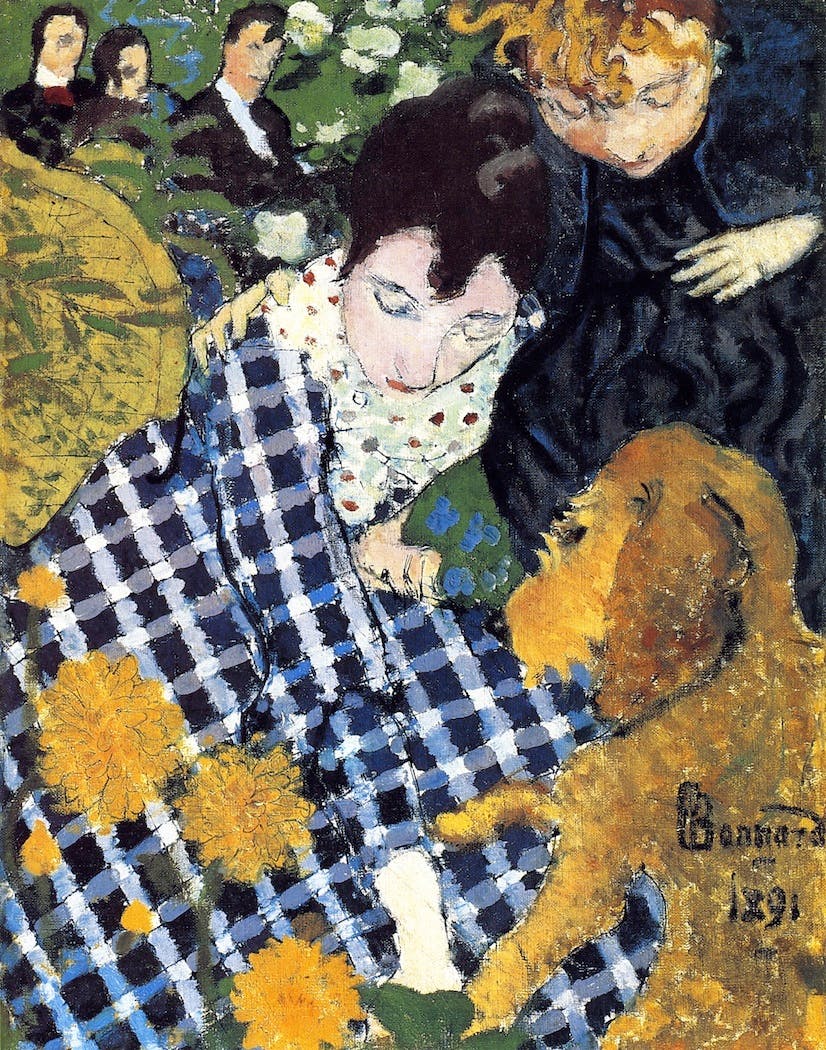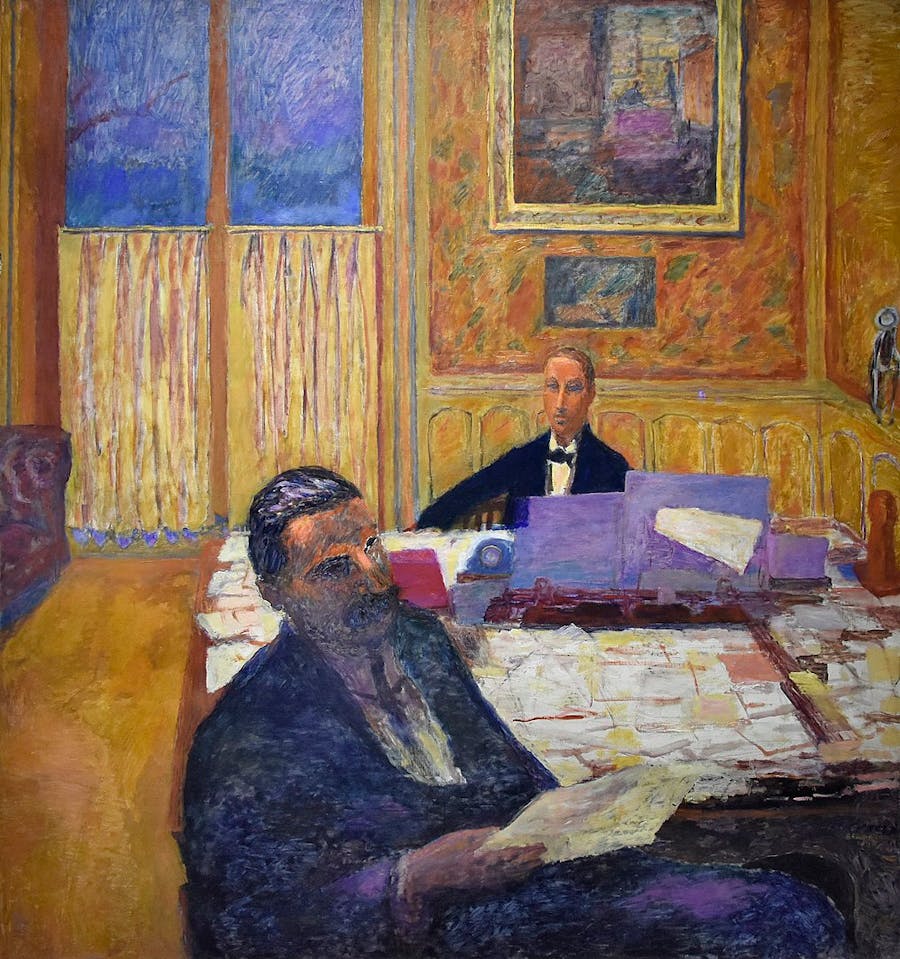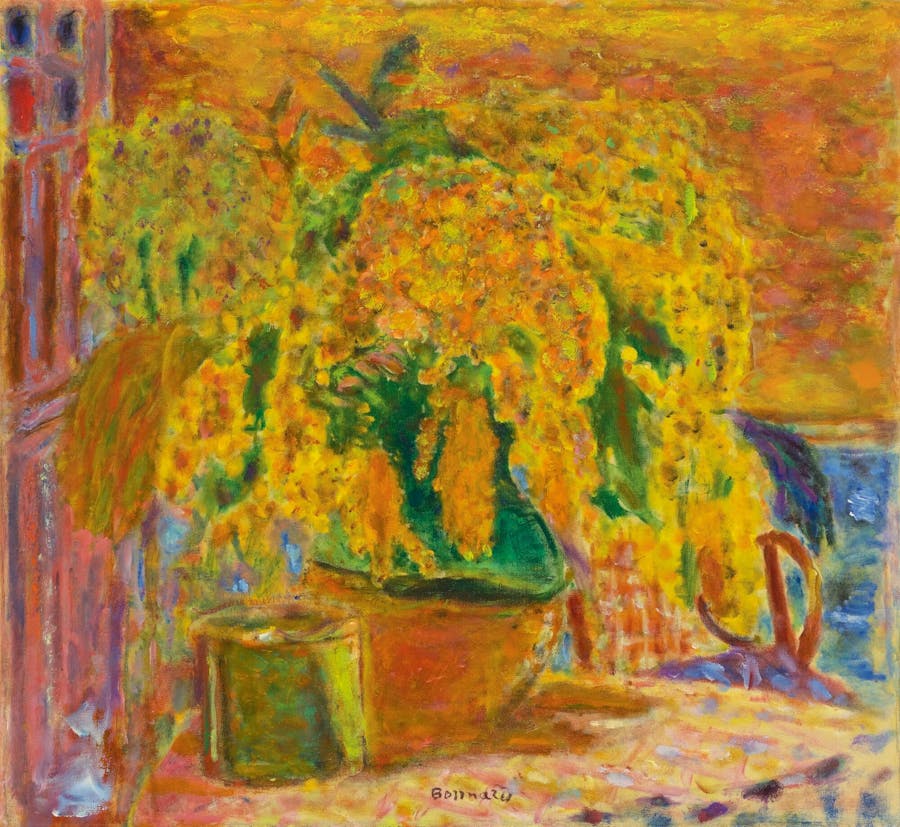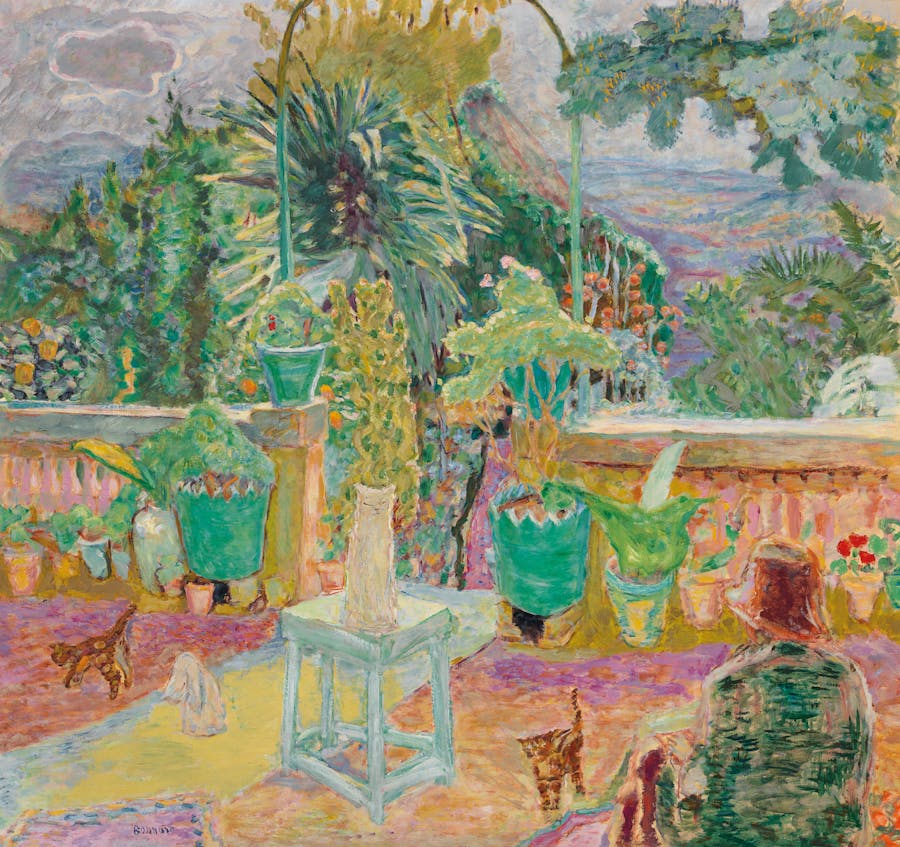Pierre Bonnard: Carefree Color
The rediscovery of Pierre Bonnard’s work, 20 years after his death, has enabled the artist to gain well-deserved renown as a master of color and light, whose paintings are complex and bursting with vitality.
Throughout the world, Pierre Bonnard’s recognition keeps rising. This is especially thanks to museums, such as the Tate Modern, which have shown solo exhibitions of his work to the public. Bonnard’s popularity is especially so as he had such a unique interpretation of the world around him, depicted in his choice of color and composition.
The artist was born on October 3, 1867 in Fontenay-aux-Roses, in the Hauts-de-Seine region, then linked to Paris by a horse-drawn tramway. He had a brother, Charles, three years his senior, and a younger sister, Andrée. As head of the Ministry of War office, his father, although focused on the arts, especially literature, did not particularly encourage his youngest son's early artistic inclinations.
See also: Claude Monet: The Father of Impressionism
Bonnard, therefore, enrolled in the Faculty of Law after his baccalaureate, most likely to please his father, where he obtained a degree in 1888. He frequented the courts as a lawyer, but also to draw the judges, peers and litigants. Ultimately, his artistic ambitions won over and In 1889 he was admitted to the École des Beaux-Arts where, alongside Edouard Vuillard and Ker-Xavier Roussel, he followed the traditional academic instruction without enthusiasm while dreaming of creating new styles.

In 1888, Bonnard joined a group of artists called Les Nabis, who encouraged the artistic move away from Impressionism and towards abstract art. Its members included the likes of Maurice Denis, Paul Ranson, Édouard Vuillard, and the movement was formally established with Paul Sérusier’s Le Talisman (1888), an intensely colorful reaction to materialism.
Bonnard rented a studio in Les Batignolles, where he produced his first Nabis works, influenced by Japanese woodblock prints and decorative and applied arts. It was the use of colors that made his works stand out and he believed that, “You reason color more than you reason drawing... Color has a logic as severe as form”. He produced 250 lithographs between 1891 and 1902 and participated in an exhibition at the Salon des Indépendants in 1891. The avant-garde art dealer Ambroise Vollard, who represented artists such as Pablo Picasso, Paul Gauguin and Auguste Renoir, opened the doors of his gallery to the movement, aiding in their success. Bonnard was intensely involved with the Nabis, but still found time for illustrating magazines, books and advertising posters in his effort to blur the line between fine arts and so-called popular arts.
In 1893, Bonnard met Marthe de Méligny, who quickly became his model and companion but whom he didn’t marry until 1925. Born Maria Boursin, de Méligny hid her humble origins behind her assumed name and presented an alleged aristocratic background. Regardless of where she came from, she was Bonnard’s muse and inspired nudes, portraits and domestic scenes.
A first artistic crisis occurred in 1905, as the Nabis movement ran out of steam and was overtaken by the new avant-gardes. Bonnard sought an aesthetic escape in Impressionism, and traveled extensively between Normandy and the south of France, where he met Paul Signac, and also to Italy and the Maghreb, North Africa. His prolific production never slowed, and after the Parisian gallery Bernheim-Jeune hosted his first private exhibition in 1906, several others followed until the 1920s.

In 1910, Bonnard painted a vast triptych of the Mediterranean for the Russian industrialist and collector Ivan Morozov. Bonnard’s appreciation of the colors and light of the South had an impact on his work, and of the former Nabis group, he was undoubtedly the one who received the most requests from early 20th century elites, including those from the pianist Misia Edwards, Arthur and Hedy Hahnloser, and the Swedish Ballet.
See also: Berthe Morisot: Emerges from the Shadows

When the First World War broke out Bonnard was 47 years old and escaped conscription, but faced an artistic crisis that led him to abandon his Impressionist style in favor of a return to form, long sacrificed to color. Scenes of Parisian life give way to landscapes and large canvases of Mediterranean inspiration.
In 1926, he was an established and respected painter that he bought a house in Le Cannet, which became his main home during the Second World War. In 1928, De Haucke Gallery in New York organized an exhibition focusing on international recognition, and in 1938 he was featured in an exposition at the Art Institute of Chicago. Under the German occupation in Paris Bonnard was forced to return to the south of France, but his lack of public commitment during the war, unlike the avant-garde artists, earned him criticism and a relative exclusion.

Bonnard continued his life in Southern France in relative seclusion, staying even after his wife passed away in 1942. His last major project was the mural Saint Francis Healing the Sick, painted for the church in Assy in 1946 to early 1947. Nearing the end of his life, Bonnard finished his last painting, The Almond Tree in Blossom, at his cottage in Le Cannet a week before his death. When Bonnard died on January 23, 1947, a retrospective was arranged at the Musée de l'Orangerie in Paris, which was originally planned as a celebration of his 80th birthday the following year, at the MoMA in New York. His popularity soon diminished, until his grand-nephew, the art historian Antoine Terrasse, began to protect and rebuild his posterity by publishing a monograph on Bonnard in 1964.
Today, Bonnard is a well-known and respected name in art history, and demand for his work continues to increase, something which is witnessed on the secondary market. This is seen in La Terrasse ou Une terrasse à Grasse, which realized $19.5 million at Christie’s in May 2019, 291% above its estimate. Other works by him continue to surpass the million-pound mark, as with Terrasse à Vernon, which achieved $11.5 million in February 2011.


